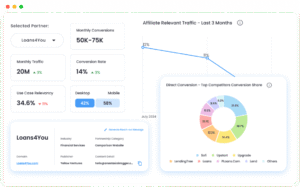
Brands in Southeast Asia are no strangers to partnerships. In fact, this region has pioneered some unique partnership opportunities not seen in any other e-commerce market before.
According to Google and Temasek, ecommerce in Southeast Asia is expected to grow to US$200 Billion in 2025, with affiliate and other partner types growing at an even faster clip. The countries of Brunei, Cambodia, East Timor, Indonesia, Laos, Malaysia, Myanmar Philippines, Singapore, and Vietnam are all showing outstanding growth rates on varying bases.
In fact, Southeast Asia is now the world’s leading market for ecommerce growth. Credit the remarkably youthful demographics of the region, the ubiquity of smartphones, and growing prosperity. There’s a lot for ASEAN to crow about, and those same market characteristics have helped power partnership growth around the world. These unique collaborations in SEA are at the spearpoint of world-leading trends.
Yet part of the reason for all of this innovation is that the Asia-Pacific region in general, and Southeast Asia in particular, boast unusual market characteristics. Here’s a cheat sheet on how partnerships are different in this dynamic and fast-growing region.
1) Mobile Rules
Let’s start with the obvious, consumers in these Southeast Asian economies are mobile native. According to Google’s Consumer Barometer research, over 90% of users in these markets access the internet through their smartphones. Mobile impacts virtually every aspect of life in many of these markets. People live their lives through their phones, relying upon them for everything from shopping to banking, travel planning, entertainment and much more. For partnership success in SEA, a brand must make everything they do mobile-first — more specifically, app-first.
2) Infrastructure Still Has a Way to Grow
Internet infrastructure is improving rapidly across most countries in Southeast Asia, though mobile networks in most countries still struggle at times to cope with growing online usage and rapidly growing Internet penetration. Additionally, while the region contains rich, post-industrial economies like Singapore, it also includes exploding economies like Indonesia and less affluent but fast-changing nations like Thailand and Vietnam. It pays to recognize that the region is not monolithic; iPrice offers some great industry resources on the national markets in the region to help get you started.
Further, many Internet connections are metered in the Southeast Asian market. This should be considered as you plan and execute ecommerce programs, messages, and offers. When faced with a choice of building a rich but heavy immersive experience or something lightweight, it generally makes sense to go lean. Partnerships can be helpful in mitigating bandwidth challenges as well, as brands can sometimes piggyback on already installed apps that millions rely on every day.
3) (Almost) Everyone is Partnering with Someone
Second, partnerships are now ubiquitous in many categories and use cases in the region. Here are just a few examples of how both global brands and the fastest-growing regional unicorns are making partnerships work:
- Airlines partnered with ride-hailing firms to provide door-to-door transport
- Ride-hailing companies linked with video streaming businesses to offer entertainment on-the-go
- eCommerce players joined forces with online travel agents to expand their offerings and user bases
- Banks teamed up with airlines and ride-hailing services to drive digital wallet services
In addition to these headline-grabbing partnerships, there is also a fast-growing world of influencers anxious to partner with brand clients on marketing campaigns.
The fascinating range of innovative alliances also points to a wider trend of companies leveraging each other’s strengths to grow and expand cost-effectively in the market. For many companies, even the region’s unicorns, partnerships are essential for growth. As new brands enter this market, partnership should be high on their list of options as they devise their market-entry strategies.
4) Reinventing the Rules of SEA Affiliate
While affiliate marketing has grown into a massive business in the US, EU, ANZ, and other locations, the model is not as well-established in SEA. One key reason is that many of the networks are nontransparent, meaning that the media partners that are sources of traffic and conversion are often masked from the clients. Historically, this has led many brands to focus on marketing strategies and investment that emphasize other sales channels and media.
But all that is changing as transparent tech platforms and networks enter the space and help bring sunlight to the strategic partnership arena. When brands have access to the right technology platform that makes tracking, reporting and paying on these partnerships transparent, there are no more excuses for a niche market obscured in darkness. Instead, partnership can be a burgeoning space growing rapidly as more brands become comfortable. Marketplaces are also very strong in the region, which is helping drive transparency as well.
Conclusion
It’s an exciting time to be active in partnership in the Southeast Asia market. Many of the innovations to co-market products that have begun here are now being taken global. But there’s no reason why that record of partner program innovation will slow in the years ahead. By reflecting the unique characteristics of the region in your plans, you can not only grow your business but also build a sustainable competitive advantage. As with any partnership in any region, though, brands and advertisers need to be mutually beneficial. Successful partnerships are always a two-way street.




